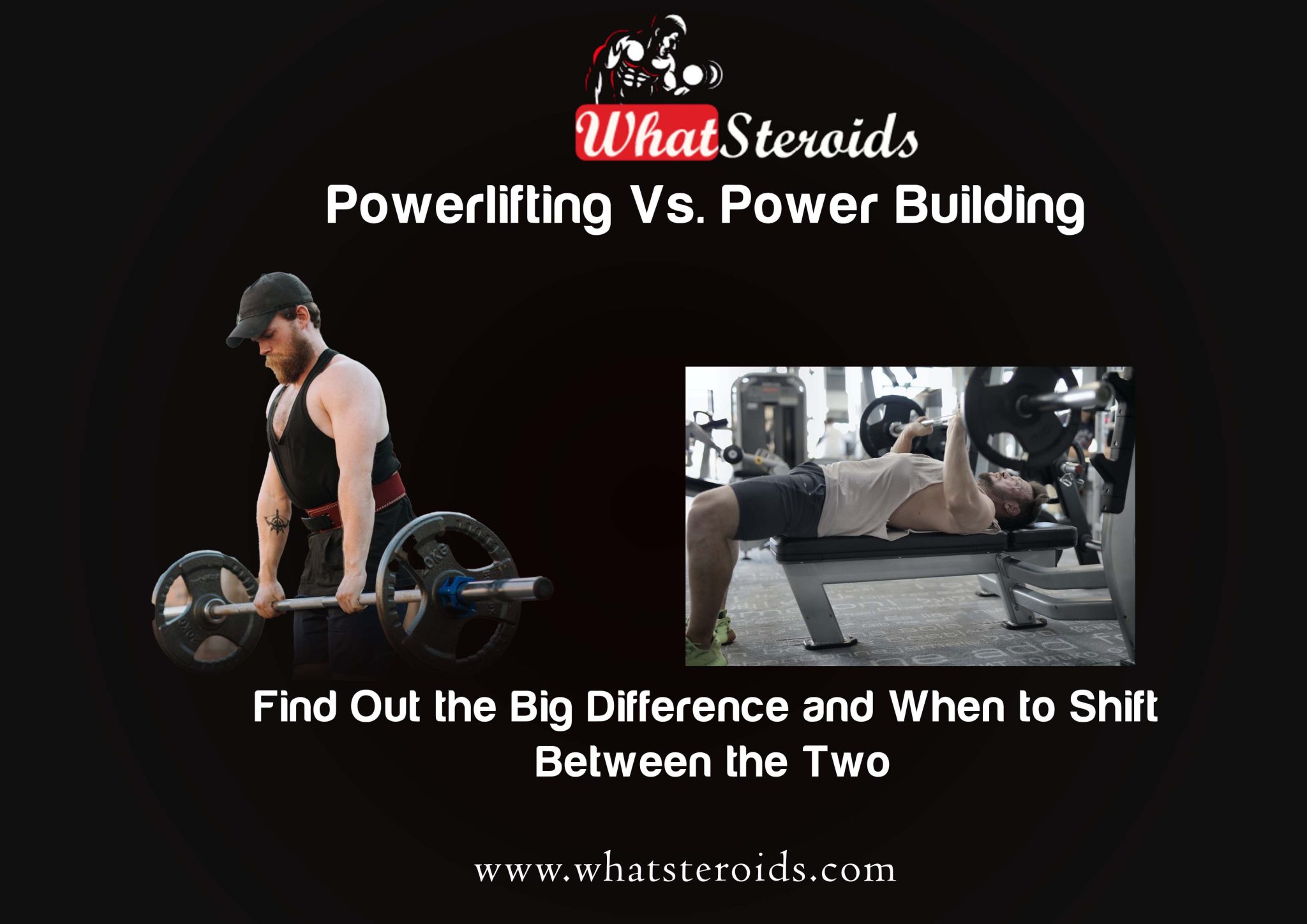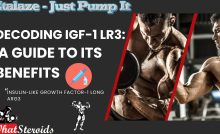Powerlifting Vs Power Building: Find Out the Big Difference and When to Shift Between the Two


Powerlifting and power building are two distinct forms of weightlifting with different goals and techniques. While powerlifting is focused on maximizing strength, power building is more about increasing muscle size and aesthetics.
In this article, we will explore the differences between these two forms of weightlifting and discuss when it’s best to switch from one to the other. We will also look at some tips for making the transition easier and more successful.
What is Powerlifting?
Powerlifting is a strength sport that consists of three main lifts: the squat, bench press, and deadlift. Powerlifters often use lower-weight loads and perform multiple reps to increase their strength.
For example, some powerlifters might squat 225 lbs for 10 repetitions using a sumo stance (the wide-legged stance most people know when performing the squat). The number of repetitions performed in each lift can vary from 1-5 depending on the lifter’s goals or experience level. When powerlifters compete against one another, their squat and bench press maxes are often considered. Powerlifters typically wear supportive, high-quality gear and lifting shoes with a flat springy sole.
The gear helps to prevent injuries when lifting heavy loads and provides needed support for the body. Powerlifters often have a platform (a triangular wooden frame) welded to the back of the squat rack, which they use during squats to help balance themselves during heavy sets. Bench pressing can be performed in the squat rack or on a bench.
Why Squat Racks?
Squat racks are easier and safer because you can use them without worrying about getting the bar in your eyes or having it come forward and hit you in the head. Trap bar training ("dual-opposition training") is often done with a trap bar attached to pegs on both sides of a squat rack to grant more stability than any one-handed implement. It also permits more freedom of movement than an Olympic lifting apparatus since there are no cross handles for precise bar positioning.
Proper Powerlifting Strategies
In use, it is placed in front of the lifter at a distance from each end, and the lifter grasps it with an overhand grip. The lifter's hands are placed just outside shoulder width, elbows slightly bent, and feet shoulder-width apart. The bar is lifted by pushing underneath its middle (the area right under the hands) with the feet while keeping both feet flat on the ground, effectively raising it without moving them laterally one iota. The bar should be pulled upwards until a slight tension can be felt in both triceps and biceps. A common variant of this movement is the shoulder press, which uses more weight and involves a greater range of motion.
The barbell shoulder press is performed by grasping a barbell with hands just outside shoulder width and then thrusting the body backward, raising the weight off the ground until the arms are straight. The movement is stopped when a slight tension can be felt in both triceps and biceps.
Power Building for bodybuilders is an essential component of any successful bodybuilding routine. It combines strength training, endurance training, and nutrition to maximize muscle growth and strength gains. Power Building for bodybuilders focuses on developing the core lifts such as squats, bench presses, deadlifts, and overhead presses.
It also includes exercises that target specific muscle groups such as biceps and triceps. Proper nutrition is also an important factor in power building for bodybuilders as it helps to fuel the muscles with the necessary nutrients for optimal performance. With a well-rounded program that combines all these elements, bodybuilders can achieve their goals of gaining strength and size while maintaining a healthy lifestyle.
The Power Building program is used by strength and conditioning coaches to develop muscle mass, strength, explosiveness, and body composition in athletes. This program can also be used for weightlifters seeking increased performance in the weight room. The program is split into three phases. The first phase lasts 8 weeks, the second lasts 16 weeks, and the third lasts 20 weeks. This program aims to help increase muscle mass, improve strength, and reduce body fat.
Must Read: Post Cycle Therapy Vs. B&C: Which is Best for You?
Phase One
This phase lasts 8 weeks. Each workout routine is divided into three movements: push, pull, and squats. You will always do two sets for each exercise, except push presses which are done as a single set. The first week will begin with two exercises for each muscle group and decrease to one exercise per muscle group by week four.
Then you will be back up to two exercises again by week eight before continuing from there with 1 movement per day until the end of Phase 3.Phase 1: Starting StrengthWeek 1-2Push Presses: 3 sets of 8 Push Ups Pull-Ups: 3 sets of 12 chin ups/dips Squats: 3 sets of 15, 10 reps Deadlifts: 3 sets of 10 reps Standing Military Presses (3-sec hold at top): 6 sets of 6 reps each week.
Week 3-4Push Presses: 4 sets of 8 Push Ups Pull-Ups: 4 sets of 12 chin ups/dips Squats: 4 sets of 15, 10 reps Deadlifts: 4 sets of 10 reps Standing Military Presses (3-sec hold at top): 8 sets of 6 reps each week
Phase 2
Starting Strength , then adding weight each weekWeek 5-6Push Presses: 5 sets of 8 Push Ups Pull-Ups: 5 sets of 12 chin ups/dips Squats: 5 sets of 15, 10 reps Deadlifts: 5 sets of 10 reps Standing Military Presses (3 sec hold at top): 10 sets of 6 reps each weekWeek 7-8Push Presses: 6 sets of 8 Push Ups Pull-Ups: 6 sets of 12 chin ups/dips Squats: 6 sets of 15, 10 reps Deadlifts: 6 sets of 10 reps Standing Military Presses (3 sec hold at top): 12 sets of 6 reps each weekWeek 9-10Push Presses: 7 sets of 8 Push Ups Pull-Ups: 7 sets of 12 chin ups/dips Squats: 7 sets of 15, 10 reps Deadlifts: 7 sets of 10 reps Standing Military Presses (3 sec hold at top): 14 sets of 6 reps each week.
Strength in Powerlifting
Bodybuilding is a sport that requires a lot of strength and power. Powerlifting is an important part of bodybuilding, as it helps to build muscle and increase strength. But how are bodybuilders able to power lift frequently? The answer lies in their training techniques and their dedication to the sport.
Bodybuilders use a variety of exercises and techniques to be able to power lift frequently. They focus on building strength by doing compound exercises such as squats, deadlifts, bench presses, and overhead presses. They also ensure they get enough rest between workouts so their muscles can recover properly.
Additionally, they eat a diet high in protein and other nutrients that help build muscle mass quickly. All these factors combined help them be able to power frequently lift without feeling tired or overworked.
Why Powerlifting Alone Cannot Build A Strong Body
Bodybuilders have high levels of testosterone, which is a muscle-building hormone. They also make sure they get enough rest. Bodybuilding is an effective way of building muscle mass quickly because it puts people in an anabolic state, where their body is not breaking down or being used up for energy. This means that regardless of the time spent on training, the bodybuilder will still grow and maintain muscle mass. Many studies show this to be true, and athletes using those techniques can achieve their goals faster than those who don't regularly use them.
Powerlifting is essential to bodybuilding and can help you reach your goals faster. It is a great way to build strength and muscle mass while improving your fitness.
Powerlifting tips can help you maximize your gains and reach your desired physique if you are a bodybuilder. Here are some powerlifting tips to help you get the most out of your workouts and stay safe while lifting weights.
If you haven't done powerlifting before, prepare by doing some simple strength training exercises. Try kettlebell swings, pushups, or pull-ups. Also, don't forget to stretch before and after your workouts. Focus on a limited number of exercises per body part and work those different muscles in each workout. For example, do bench presses Wednesdays and deadlifts Fridays to target the chest and back, respectively, at the same time each week.
Alternating Between Different Muscles
On Saturday, alternate between one-arm barbell rows for the back muscles with squats for quadriceps muscles such as legs. Work out for about 30 minutes before taking a break for about 10-15 minutes. If you must take longer than 15 minutes, do it in two 5-minute sessions. Aim to do your exercise within 4-6 reps per set. This allows you to use heavier weights and build muscle over time without burning out quickly. Do not work the same body part two days in a row (unless it's a rest day). For example, you should not work your chest on Wednesday and again on Friday, as this will cause muscular imbalance and overcompensation.
Perform one set for each muscle group, working each muscle once or twice per week. You should take a day off every week to allow muscles to recover and build strength.
For those looking to get into the fitness world, there is often a debate between building muscle and powerlifting. While both have advantages, deciding which is right for you can be difficult. That's why it's important to understand the differences and how they can be used together to achieve your fitness goals. By understanding the differences between building muscle and powerlifting, you can find a balance that works for you and helps you reach your goals faster.
The Science Behind Building Muscle
Building muscle is a process where your body slowly builds up the size of individual muscle fibers. This process can take anywhere from 8-12 weeks, but most people see their results after 6-8 weeks. Building muscle is to increase your overall strength and build a toned physique rather than adding pounds of weight to your muscles.
Muscles are built by creating microscopic tears in the muscle fiber, which are then repaired by satellite cells. For this growth to happen, you need a lot of protein and carbohydrates to feed your muscles while they recover from workouts. I'm doing this for many reasons.
Powerlifting is a strength-based sport that requires skill, technique, and dedication. It is a great way for professional bodybuilders to stay in shape and increase their muscle mass. Powerlifting can help pro bodybuilders reach their goals faster by increasing their strength and endurance. It also helps them build muscle mass quicker than traditional weight-lifting exercises.
Powerlifting For Pro Bodybuilders
Powerlifting by pro bodybuilders can be an effective way to achieve the desired fitness level, as it allows them to lift heavier weights than they would normally do with traditional weight-lifting exercises. Additionally, powerlifting helps pro bodybuilders develop more explosive power, which can help them in competitions. Furthermore, powerlifting can also help improve coordination and balance, which are important skills for any athlete.
Weightlifting is a sport; to achieve the best performance possible, it requires specific training and diet. Bodybuilders often choose weightlifting to improve their lower body strength which helps them lift more weight than they would be able to with bodybuilding exercises. Additionally, weightlifting helps pro bodybuilders develop more endurance and power while using less energy.
Powerlifters compete against each other in timed events where the object is to either complete a certain amount of repetitions with a specific amount of weight or move the barbell from point A to point B with maximum intensity. While this type of training is similar to that of bodybuilding, those who compete in powerlifting don't have to build up their muscles through progressive resistance training. as they are not concerned with aesthetics.
By contrast, powerlifters compete in events from a squat to a bench press, where the object is to lift as much weight as possible and most efficiently. They might have a maximum weight of 25kg for the squat and 165kg for the bench press. They will finish those events by completing one repetition or moving their bodies from point A to point B with maximum intensity, respectively.
Related Article: Olympic Lifting: 25 Strategies That Work
The Big Difference
Powerlifters train similarly to bodybuilders by increasing their muscle mass through progressive resistance training over time by lifting heavier weights to hit intense lifts like squats and benches regularly. Athletes often have a challenge to complete within a certain time limit, such as deadlifting 250 pounds within 30 seconds or completing 20 pull-ups in 2 minutes. In these cases, the athlete would compete by completing one repetition of the event or moving their body from point A to point B with maximum intensity respectively.
Reverse Pyramid Training is most commonly used in powerlifting and Strongman competitions. Athletes will repeat the same weight for four sets of five repetitions at 80% of their 1rm with short rest periods between each set, also known as a "reverse pyramid."Powerlifters will complete a bench press workout consisting of three sets with 8-12 repetitions at 70% of their 1rm with short rest periods between each set; this is also known as a "reverse pyramid" bench press. What are the benefits of reverse pyramid training?
Benefits for Athletes
The athlete will experience a greater training effect due to their system’s ability to recover from each successive set; as they progress in strength, they can perform each set with more weight and volume, rather than starting at 100% of their 1rm and working down.- As the load increases throughout the workout, so does intensity. Athletes typically do not feel as much fatigue towards the end of a workout as if they did not take rest periods between sets. Reverse pyramid workouts that target hypertrophy typically last around 45 minutes and have anywhere from 10 to 20 sets. Rest periods between sets typically last about 30 seconds, but athletes should take rests as long as needed.
Building more muscle through powerlifting and dieting can be a daunting task. But with the right knowledge and dedication, anyone can do it. Powerlifting is an effective way to build strength, while proper nutrition is essential for muscle growth. This article will discuss the best practices for powerlifting and dieting to help you build muscle mass quickly and effectively. We will also discuss combining these two disciplines to maximize your gains.
Powerlifting
Powerlifting is a strength sport where you perform repetitive and standardized holds at maximal weights. Throughout the competition, the athlete or lifter will try to accumulate as much weight as possible on their back while completing the most repetitions. There are currently three total powerlifting disciplines: Olympic lifting, strongman lifting, and powerlifting.
Each of these three disciplines consists of six lifts: The squat, deadlift, bench press, shoulder press (deltoid), military press (latissimus dorsi), and pull-up. An individual could compete in one or all three disciplines. Olympic lifting is a sport where athletes attempt to lift as much weight as possible using different techniques.
Olympic Events to Powerlift
There are two Olympic lifting events: the snatch and the clean and jerk. The snatch is performed when an athlete, starting from a dead stop, continuously lifts a barbell from the floor to overhead by contracting both arms above their head. The clean and jerk are performed when an athlete cleans a barbell (grabs it with one hand), then jerks it overhead with both arms at once by contracting their legs behind them.
Strongman competition involves strongmen performing feats of strength in various implements, including stone lifting, tire flipping, keg holding, and sandbag carrying. There are two Olympic lifting events: the snatch and the clean and jerk. The snatch is performed when an athlete, starting from a dead stop, continuously lifts a barbell from the floor to overhead by contracting both arms above their head.
The clean and jerk are performed when an athlete cleans a barbell (grabs it with one hand), then jerks it overhead with both arms at once by contracting their legs behind them. Strongman competition involves strongmen performing feats of strength, usually related to using various types of barbells.
Overall
Strongman competitions have no weight limit; strongmen often compete in feats requiring extremely heavy weights. Power clean The power clean is a variation of the clean and jerk, where athletes explosively push themselves upwards from a squatting position by extending their knees and hips while simultaneously bringing the bar into their hips with an overhand grip.
Recent Posts
Steroid Shops Review
osgear.se Reviews ⭐⭐⭐⭐⭐ Score: 97.78% Osgear has consistently maintained a 99% customer satisfaction rate across key…
ACE-031: A Powerful Myostatin Inhibitor
ACE-031 is a synthetic peptide designed to block myostatin, a natural regulator of muscle growth.…
Decoding IGF-1 LR3: A Guide to its Benefits
IGF-1 LR3 (Insulin-like Growth Factor-1 Long Arg3) is a synthetic variant of IGF-1, a hormone…
AOD-9604: The Fat-Burning Peptide Explained
AOD-9604, along with the similar HGH Frag 176-191, is a peptide derived from Growth Hormone…
Understanding Trenbolone-Induced Cough (“Tren Cough”)
Trenbolone, a potent anabolic steroid, can sometimes cause “tren cough”—a sudden and intense coughing episode…
Creatine vs Myostatin: An Expert’s Analysis
Myostatin, a protein encoded by the MSTN gene, acts as a regulator of muscle growth.…


